Fish leather
Fish leather is a rare type of leather. The skin surfaces are often very small. In recent years, objects from stingray leather have become more popular. This is due to the glass bead-like surface structure.
But also the increasing fish farms for various fish species increases the offers of fish leather. The fish skins would otherwise be waste of the fish farms.
In fish leather the fibre structure is across one another. Unlike for example in cowhide, where the fibre structure is arranged parallel. As a result, fish leather has a higher strength if same leather thicknesses is compared. The tensile strength of fish leather reaches up to 90 Newton (e.g. salmon or perch).
The manufacturing principle for fish leather production comes originally from the Nanai from Eastern Siberia, which traditionally use fish leather for the production of garments. The tanning process requires about a month.
Suitable for making fish leathers are the skins of sharks, salmons, carps, stingrays, cods, sea wolfs and sturgeons. Fish leather usually has a scaly structure, is thinner than calfskin and is considered to be very elastic and tear-resistant.
Contents
- 1 Fish leather surfaces
- 2 Boxfish
- 3 Carp leather
- 4 Catfish leather
- 5 Cod leather
- 6 Dolphinfish leather
- 7 Eel leather
- 8 Moray eel leather
- 9 Pacu leather
- 10 Parrotfish leather
- 11 Perch leather
- 12 Pirarucu leather
- 13 Plaice leather
- 14 Puffer fish - Ball fish
- 15 Salmon leather
- 16 Sea wolf leather
- 17 Shark leather
- 18 Stingray leather
- 19 Sturgeon leather
- 20 Tilapia leather
- 21 Video about leather of different animal species
- 22 Other exotic leather
Fish leather surfaces
On fish leathers the typical scale structure is expected. But there are many species of fish with other skin surfaces.
The different skin surfaces of fish
| picture | surface | fish species |
|---|---|---|

|
scale structure | perch, dolfinfish, carp, cod, salmon, pacu, pirarucu (= arapaima or paiche), parrotfish, tilapia, plaice |

|
relatively smooth surfaces | some shark species, atlantic stingray, catfish |

|
central scar | eel, salmon, pacu, plaice |

|
only under the microscope visible scaly structure | some shark species |

|
hard pearl studs, which are also sanded flat for design reasons | some stingrays species, kitefin shark |

|
on hair pores reminding surfaces | moray eel, sea wolf |

|
a driftwood-like surface | sturgeon |
Boxfish
The boxfish is a subspecies of the puffer fish. This one was dried to parchment in Brazil and should help to keep the "evil eye" away.
Dried boxfish from Nilo Peçanha - Brazil.
Carp leather
Carp leather is soft and has a scaly structure.
Carp leather is very scaly.
Carp leather as gold leather.
Carp leather as handbag manufactured by www.ledermanufaktur.com.
Carp leather made by Anatol Donkan.
The "Barbe" is a European freshwater fish of the carp family. The skin of the Barbe has a typical scale structure and is instantly recognizable as fish leather. Leather objects made of leather of the Barbe are very rare.
Barbe leather.
The middle leather is of a Barbe (made by Flat Iron Straps).
Catfish leather
The catfish is the largest freshwater fish in Europe. He prefers large lakes and rivers with muddy waterand is common in Central and Eastern Europe to central Asia. The catfish has no scales. The leather is smooth with a distinctive grain and drawing.
The leather of a catfish doesn`t have a scale structure.
Cod leather
Also the skin of cod fish is processed into leather. Cod is one of the most important food fish from the North Atlantic and Arctic Ocean.
cod-seafood
Cod Leather is a typical fish leather with a scaly skin. The skin is about 40 - 50 centimeters long and 10 to 15 centimeters wide (= approximately 0,5 square feet) and tapers from neck to tail. Cod leather is a thinner leather.
Cod leather, a complete skin of www.heider-leder.de.
The fish and leather samples of www.heider-leder.de.
The skin texture is very irregular.
Cod-parchment produced by bookbinding Zerbst.
Dolphinfish leather
Dolphinfishes live in the Mediterranean Sea, Atlantic, Pacific and Indian Ocean. They are also called "mahimahi". Dolphinfish are up to 1.80 meters long and can weigh up to nearly 40 kilos. The skin has small, round scales.
You can see the small round scales chambers of the dolphinfish (available at www.piracolor.de).
Eel leather
Eel leather is a rarity. The leather is a small strip due to the shape of the fish. Characteristic is the center strip on the leather. Eels have no scales.
Eel in the water. - Smoked eel.
Eel leather. The characteristic central scar is clearly visible.
Eel leather chair from Estonia.
Eel leather boots of Chicago from 2005 for 200 $ - Eel leather bespoken shoe produced by [ Jacob, F. Schuhe.
Eel leather chair from Turkey (seen at www.deriklinik.com).
Little bag of eel leather (www.piracolor.de).
Moray eel leather
The leather of the moray is solid and has an appearance of hair pores.
Morays
Moray leather has a typical grain.
Morays leather handbag.
Pacu leather
The Pacu of South America is closely related to the piranhas but its a pure fruit and seed eater.
Striking are the teeth. The teeth are similarly constructed as in humans. In newborn Pacus the belly is still red. Adults Pacus have gray to black bellies and are up to 30 kilos.
The Pacu is a popular food fish and lives in rivers and lakes. But the Pacu is also bred in ponds. As his dangerous cousin the piranha, the pacu is covered with a large number of very small scales.
There are different types of Pacu. - Leather watch strap of Pacu Leather (made by Flat Iron Straps).
Pacu fish dish in the Pantanal in Brazil.
Pacu leather has small scales (www.piracolor.de).
Parrotfish leather
The leather from tropical parrot fish is a typical scaly fish leather.
Parrotfish and Parrot fish dish.
Leather of parrotfish.
Perch leather
Perch leather or sea bass is a soft, flaky fish leather. The fish are native to Africa (Tanzania, Kenya and Uganda). A skin is on average 1.0 square foot (50 - 60 centimeters wide and about 14 - 20 centimeters wide).
Perch leather, complete skin from www.heider-leder.de.
The fish and leather pattern of www.heider-leder.de.
The skin structure is reminiscent of rumen leather.
Sea bass leather in bright color of www.piracolor.de.
Pirarucu leather
The Pirarucu (also called Arapaima or Paiche), is a freshwater fish that is located in the Amazon area. The Pirarucu is very large and can be over 2 meters long and weigh over 100 kilos. The Pirarucu has very large scales. The leather is unexpectedly soft and flexible. Because of these characteristics it is a distinctive leather.
The Pirarucu is a large fish with correspondingly large skin.
The Paiche is a tasty fish in Bolivia.
The leather is very soft, has very large scales chambers and has a multilayered structure. There is no comparable leather with this look and feel.
The leather of the Pirarucu has a striking scale structure. Left natural scale chambers, right edges of the scale chambers cut.
The leather of the Pirarucu has very large fish scull chambers and is multi-layered.
Pirarucu-leather handbag from www.mygretchen.com and www.ledermanufaktur.com.
Art of Pirarucu leather. - Leather boots. - Pirarucu leather wedding dress.
Plaice leather
The plaice or goldbutt is a flatfish. The plaice is found on almost all European coasts and is a significant food fish. The skin has small scales and a clearly recognizable middle scar.
The plaice is a flatfish, which is suitable as food fish.
The skin of the plaice has small scales and a clearly recognizable middle scar (www.piracolor.de)'
Puffer fish - Ball fish
The skin of ball fish is sometimes dried and sold as a lamp or accessories.
Ball fish parchment as lamp.
Salmon leather
The skin of salmon is tanned. The typical appearance of the fish scales remains the same. Salmon leather is thin and light and is about 60 - 65 centimeters long and 10 - 14 centimeters wide (= approx. 0.8 square feet).
According to the supplier of salmon leather, the leather of salmon has a higher strength than sheep or pig leather.
The main processing area is the accessory area. Salmon leather is fashionable for bags, clothing or shoes.
Nowadays the skins come from the breeding farms of salmon. Therefore, sufficient hides are available for further processing to salmon leather. However, salmon leather is not widely used. It is a niche product in the leather market.
Salmon leather is often [[Vegetable-tanned leather|vegetable tanned] or FOC (chrome-free) tanned.
Salmon
Salmon skin ("Nanaileder").
Salmon leather crust. - Salmon leather ironed and coloured.
Salmon leather is available in many colorful colors from the company "Nanaileder"
Salmon leather in the furniture area. But a rarity.
Leather watch strap made of salmon leather (Flat Iron Straps). - Leather shoes with compination of salmon leather and calfskin (Ledermanufaktur Posenanski).
Salmon leather not ironed. - Salmon leather ironed. - Bespoke shoes (Jacob, F. Schuhe).
Leather handbags. - Leather handbags made of metallic leather. - Lachsleder als Leather straps of the company "Nanaileder".
Salmon leather art of Anatol Donkan.
Salmon leather skin of www.heider-leder.de.
Sea wolf leather
The leather of a sea wolf is a rarity and mostly comes from the seas around Iceland. The skin of the sea wolf has no scales and is therefore smooth. A skin is about 60 - 70 centimeters long and 14 - 20 centimeters wide (= approx. 1.1 square feet). Characteristic are the dark spots on the skin.
Sea wolf leather.
The fish and leather patterns of www.heider-leder.de.
The leather of the sea wolf has no scales as with the moray eel leather or the shark leather (www.heider-leder.de).
Leather watch strap made of sea wolf leather (Flat Iron Straps).
Shark leather
Haileder ist meist ein narbiges Leder, das mit zahlreichen winzigen Hautzähnchen besetzt ist. Es wird als Schuh- und Gürtelleder, aber auch für Armbänder und Trommelfelle verwendet. Auch wurden die Häute des Hais in früherer Zeit aufgrund ihrer Beschaffenheit zu Schleifpapier oder zu Schwertgriffen (die nicht aus der Hand gleiten konnten) verarbeitet. Im mittelalterlichen Japan diente Haileder (鮫皮) dazu, die Wurzeln der Wasabipflanze, einer Art Meerrettich, zu reiben, um das Gewürz zubereitungsfähig zu machen. Heute verwendet man dafür meist Metallwerkzeuge; nur in Einzelfällen (z. B. traditionellen Restaurants) werden noch Lederreiben benutzt. Es gibt aber auch Haiarten mit einer glatten Lederhaut.
Hai - Haifischgericht
Charakteristisch für die meisten Haiarten: Unter dem Mikroskop ist eine Schuppenstruktur erkennbar.
Geldbörse aus Haileder (www.piracolor.de) - Außergewöhnlich: Haifischleder auf einem Fahrradsattel
Biker Wallets aus Haifischleder (von bikerwallets.de) und Haifischleder Uhrenarmband (von Flat Iron Straps)
Es gibt, wie beim Rochen, auch glatte Narbungen bei einigen Haifischlederarten (von Flat Iron Straps)
Trommel mit Bezug aus Haifischleder von den Marquesas-Inseln (Französisch-Polynesien, Südsee)
Reiben für die japanische Meerrettichzubereitung, bezogen mit Haileder. Bild: Wikipedia, User:Chris 73, Lizenz: Creative Commons 2.5
Kitefin shark
Boroso ist eine Bezeichnung für Haifischleder, das aus dem kitefin shark gewonnen wurde. Dieses Leder wurde für die Belederung von Schwert-, Säbel- und anderen Waffengriffen benutzt. Es erinnert an die Struktur vom Perlrochenleder. Die Perlenstruktur ist aber etwas feiner.
Kitefin shark-Pergament
Kitefin shark polished.
Kitefin shark oberflächengefärbt
Kitefin shark Uhrenarmbänder (von Flat Iron Straps)
Coral shark
Vor ca. 100 Jahren wurden Handtaschen hergestellt, die ein auffälliges Wellenmuster haben. Aus unbestätigten Quellen soll es sich dabei um Korallenhai handeln. Auch unter Lederexperten ist unbekannt, welche Haiart sich dahinter verbirgt, oder ob es sich um eine besondere Verformungstechnik handelte. Die Oberfläche hat zumindest nicht die charakteristische Struktur der meisten Hailederarten.
Sehr alte Handtaschen. Die Narbung ist außergewöhnlich (from the collection of Ms. Ursula Kayser from Göttingen - Germany).
Aus alten Handtaschen aus "Korallenhai-Leder" gefertigte Uhrenarmbänder (von Flat Iron Straps)
Stingray leather
Rochenleder ist ein seltenes Leder und taucht gelegentlich bei Accessoires wie Börsen, Lederetuis und Messerscheiden auf. Es kann in verschiedenen Farbtönen eingefärbt werden, charakteristisch bleibt aber immer eine helle Stelle auf dem Leder, die durch das Wegschleifen der Kuppen der Perlen entsteht. Die Oberfläche von Rochenledern erinnert auch von der Härte an kleine Glasperlen und lässt sich sehr schwer schneiden und kann nur mit Spezialwerkzeugen bearbeitet werden.
Man unterscheidet die breiteren Häute der Perlrochen und die langen und schmalen Häute der Stachelrochen.
Rochen
Perlrochen verschieden eingefärbt - komplett geschliffen
Perlrochen - Der helle, rautenförmige Fleck entsteht durch das Wegschleifen der Kuppen der Perlen. Die Rautenform hat sich als Erkennungszeichen etabliert.
Stachelrochen - Die Aufhellung in der Mitte entsteht auch durch Schleifen der Kuppen der Perlen.
Die ungeschliffenen Kuppen. Jede Perlrochenhaut hat mehrere größere Perlen im Mittelbereich. Dort wird dann die Raute geschliffen.
Auf der ganzen Fläche geschliffene Rochen.
Sehr exotisch: Rochenleder auf einem Fahrradsattel.
Rochenleder Uhrenarmband (von Flat Iron Straps) - Rochenleder als Schlüsseletui
Schmuck-Kästchen der Firma Löffelsend mit Rochenleder bezogen und teilweise mit Holz und Knochen abgesetzt
Perlrochen als Handytasche (www.feinleder-hoffmann.com) oder als Biker-Wallet (von bikerwallets.de)
Rochenleder wurde auch schon im 18. Jahrhundert in England und Frankreich für Präziosen verarbeitet. Operngläser, Schminksachen, Instrumentenboxen etc. - gesehen im DLM - Deutsches Ledermuseum in Offenbach
Auch bei hochwertigen Möbeln wurde am Anfang des 19. Jahrhunderts Rochenleder verarbeitet.
Uralter, traditioneller Schwertgriff mit Rochenleder aus Japan.
Rochenleder-Helm (www.wildfangdesign.de) - Rochenleder-Stiefel (www.jean-gaborit.com)
Maßschuhherstellung Rochenleder gefertigt durch Himer Maßschuhe
Rochenlederherstellung - Getrocknetes Rochenleder
Kunstleder: Nachgemachtes Rochenleder - mit dem Auge kaum zu unterscheiden.
Atlantic stingray
Die Haut vom "Atlantikrochen" hat eine komplett andere Oberfläche im Vergleich zum Perl- oder Stachelrochen. Die Haut weist keine Perlen- oder Schuppenstruktur auf, sondern hat eine vernarbte, aber glatte Oberfläche. Lederobjekte aus Atlantikrochenleder sind sehr selten.
Atlantik-Rochen-Leder
das braune Leder ist Atlantikrochenleder
Sturgeon leather
Das Leder vom Stör hat eine ungewöhnliche Oberfläche. Es erinnert an Holz oder Kork und ist sehr feste.
Störleder von Anatol Donkan
Störleder von Anatol Donkan
Geldbörse aus Störleder (www.piracolor.de)
Uhrenarmbänder aus Störleder (von Flat Iron Straps)
Wie beim Rochenleder können beim Störleder die Kuppen der knochenartigen Auswüchse angeschliffen werden, um außergewöhnliche Designeffekte zu erzeugen.
Störleder angeschliffen - eine ungewöhnliche Optik
Tilapia leather
Der Tilapia zählt zur Familie der Buntbarsche und wird relativ groß. Das Schuppenbild ist ausgeprägt.
Tilapia - Tilapia-Gericht
Tilapia-Leder
Geldbörse aus Tilapialeder (www.piracolor.de)
Video about leather of different animal species
Leather of different animal species - Exotic leather
Other exotic leather
- Alligator leather
- Alpaca fur
- Antelope leather
- Armadillo leather
- Bird leather
- Bull testicles
- Caiman leather
- Camel leather
- Carpincho leather
- Cat fur
- Chicken leather
- Crocodile leather
- Dog leather
- Donkey leather
- Elephant leather
- Frog leather - Toad leather
- Giraffe leather
- Hippo Leather
- Horsehide - Horse leather
- Kangaroo leather
- Llama Fur
- Lizard leather
- Ostrich leather
- Pangolin leather
- Peccary leather
- Rumen leather
- Sealskin leather
- Snakeskin
- Turtle skin
- Walrus leather
- Yak leather
- Zebra hide








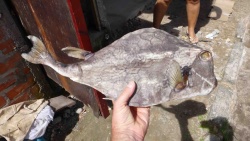
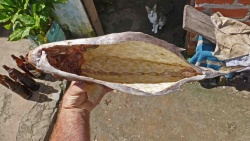


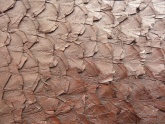





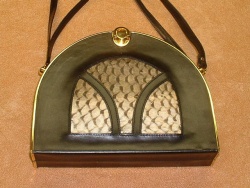
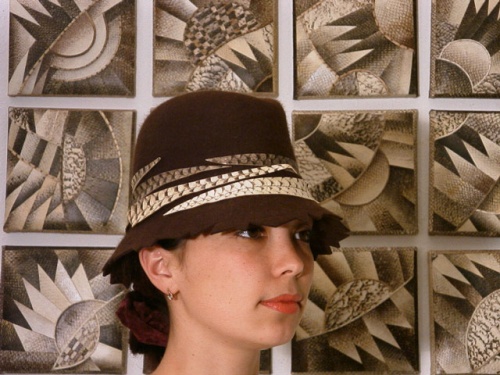
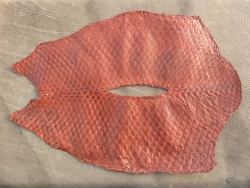
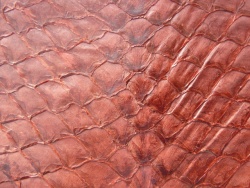
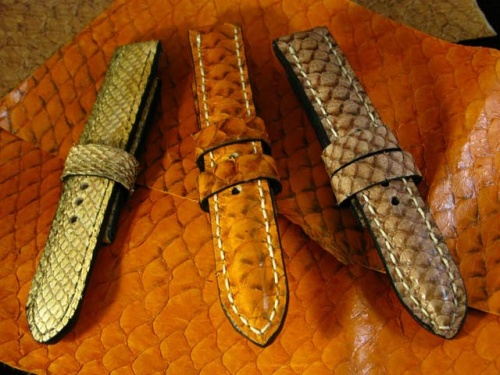





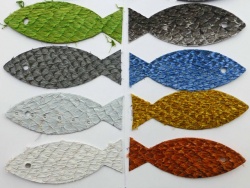
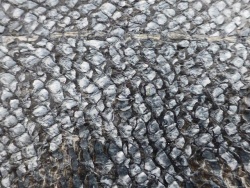


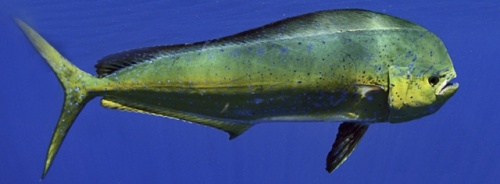

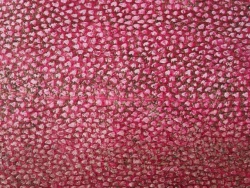
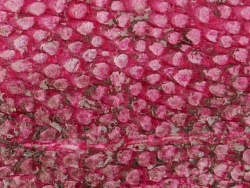
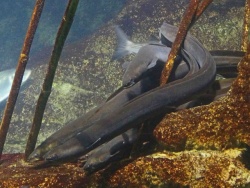

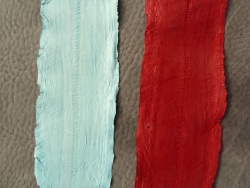
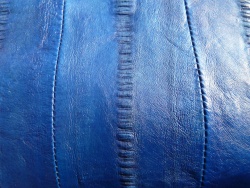
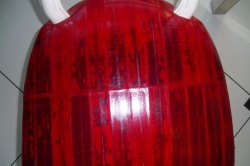
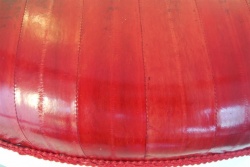

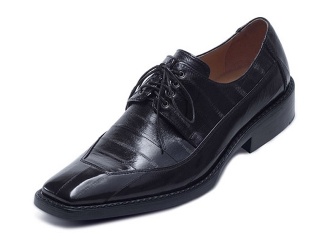

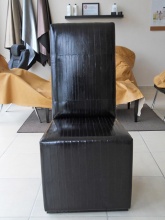
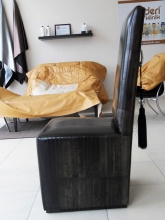
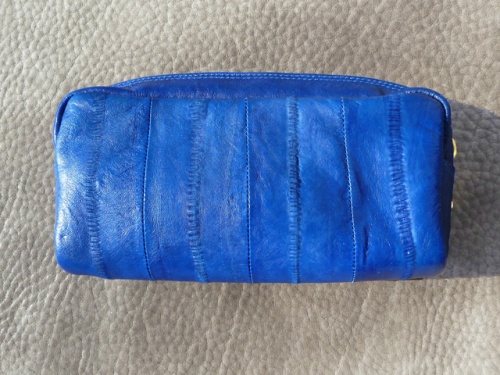
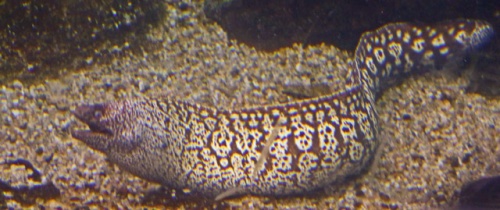



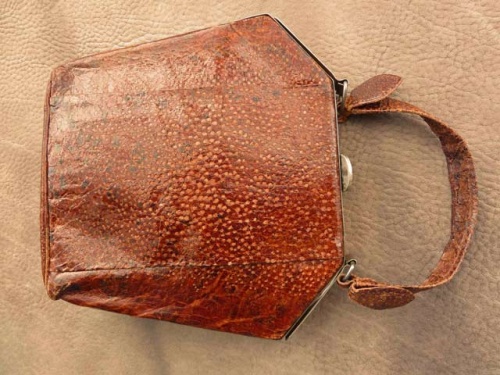
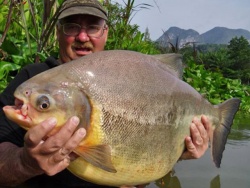
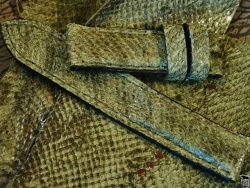
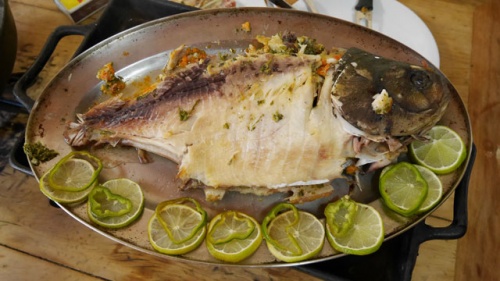


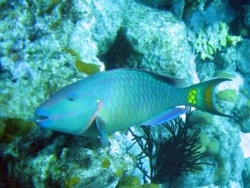
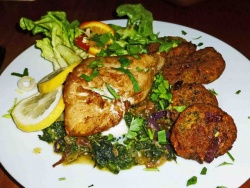
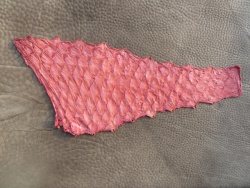


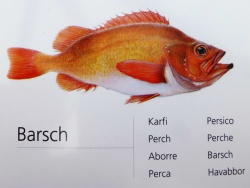
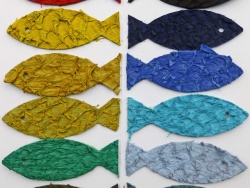
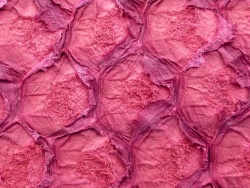
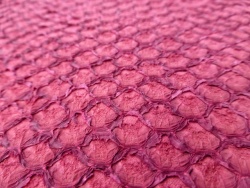
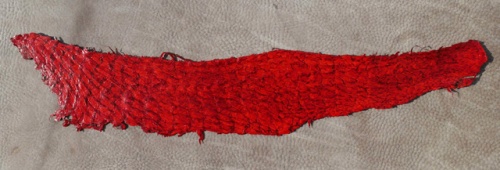


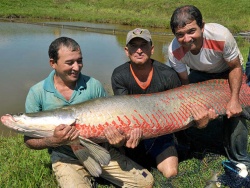
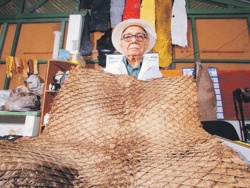
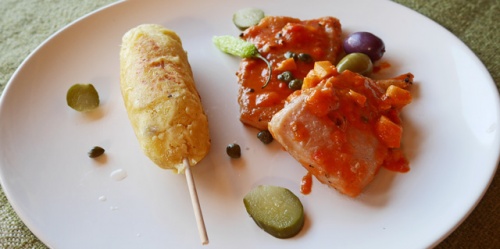

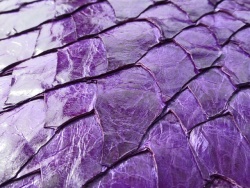
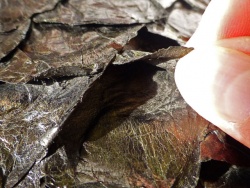
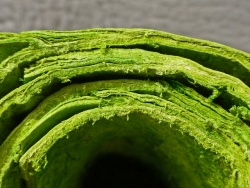
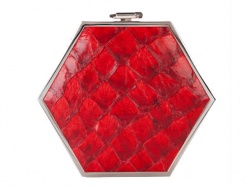
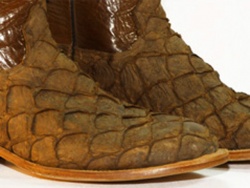
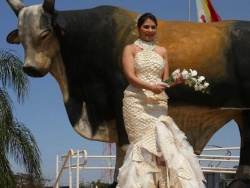
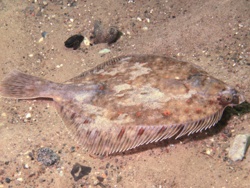
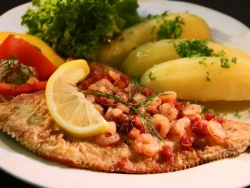


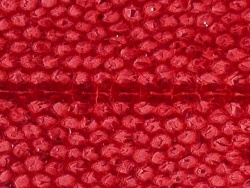

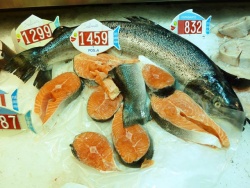




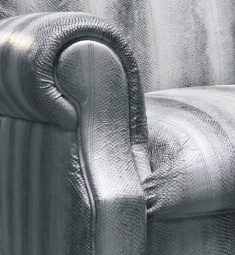
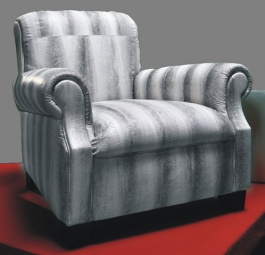



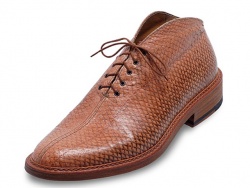

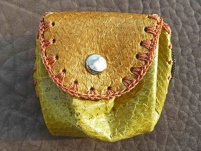





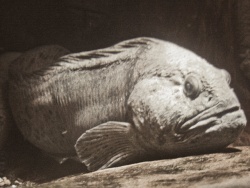

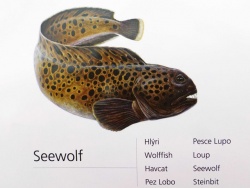
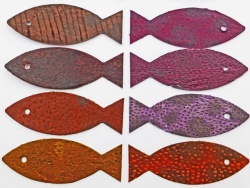

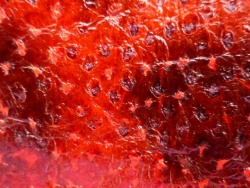

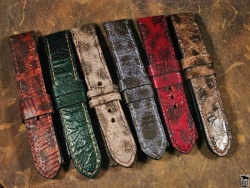
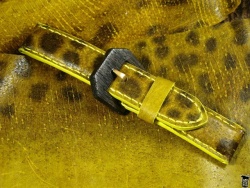
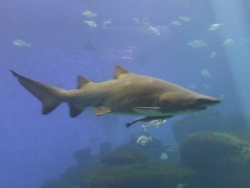
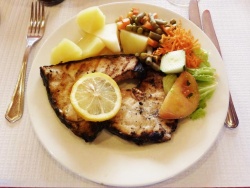



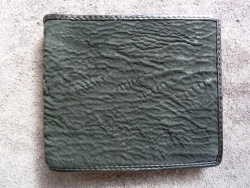
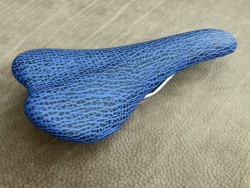

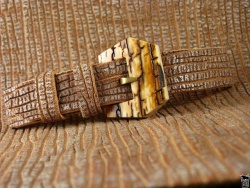

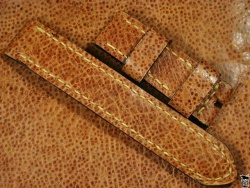


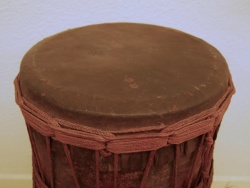
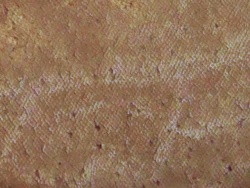
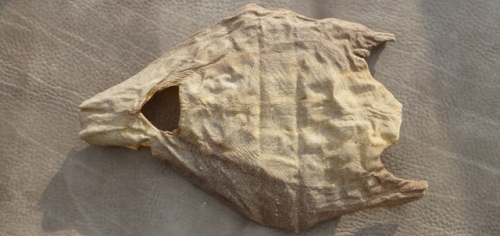

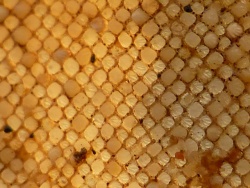
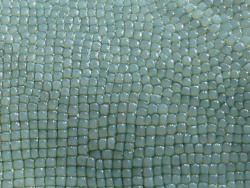
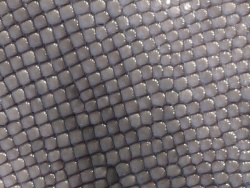

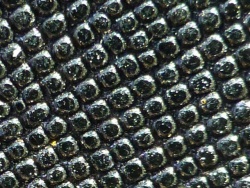

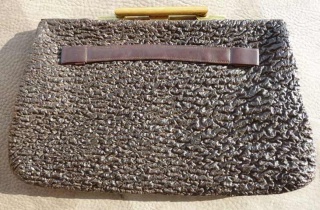

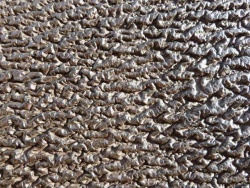
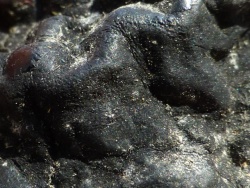
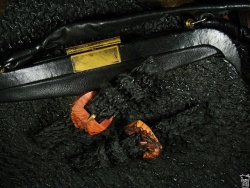
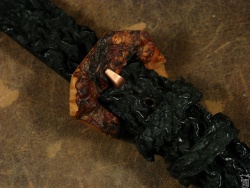

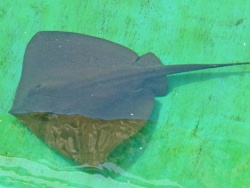
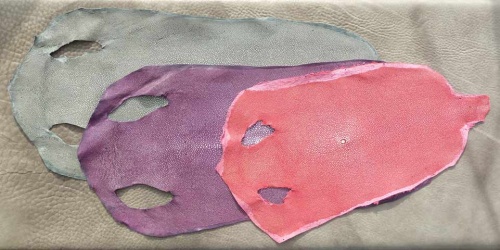
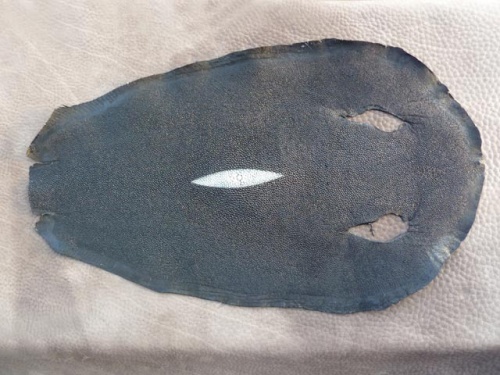
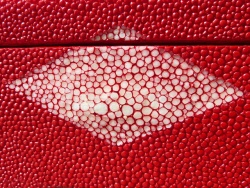

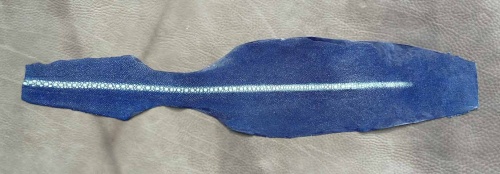
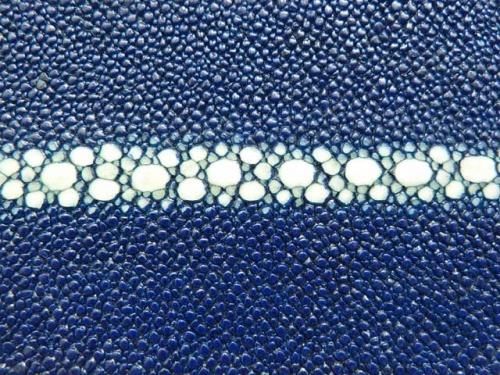
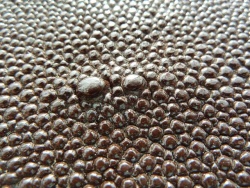
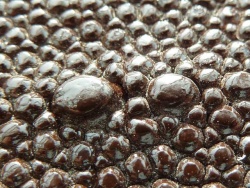
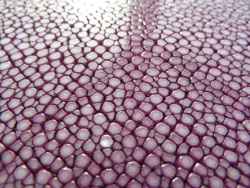



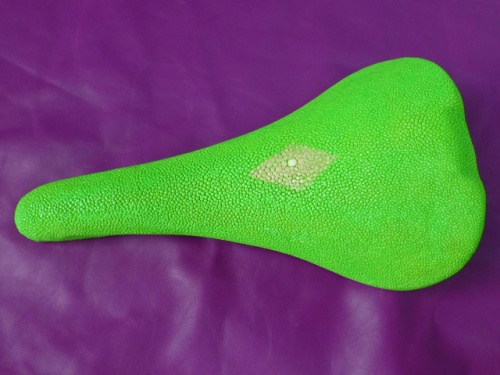
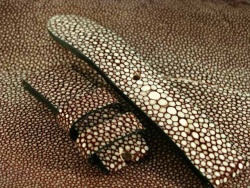
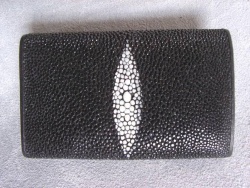
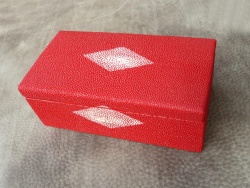
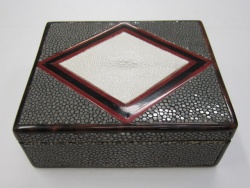








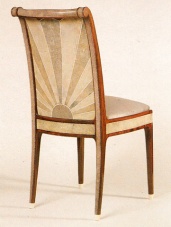

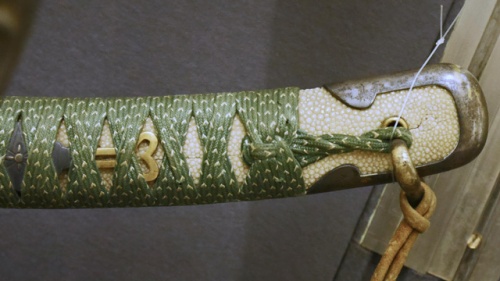
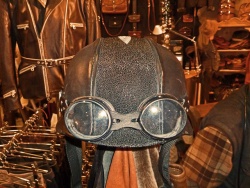
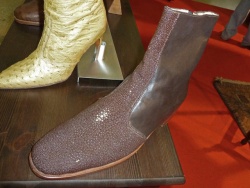
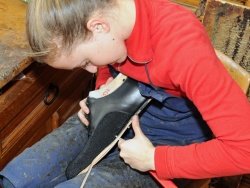
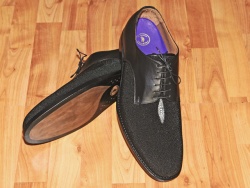

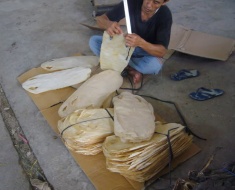
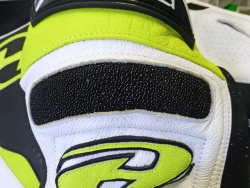

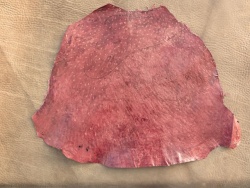


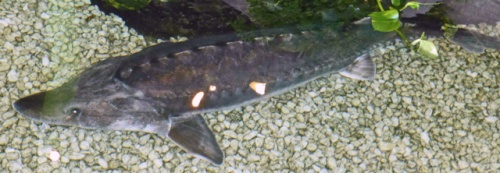

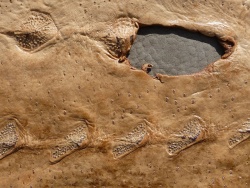
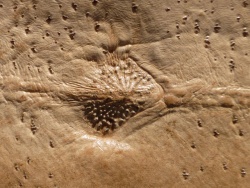

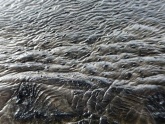
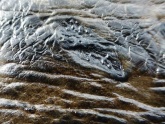
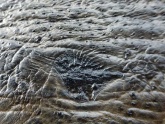
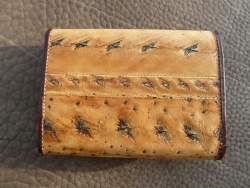
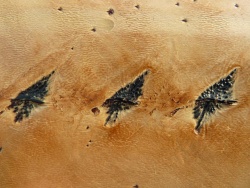
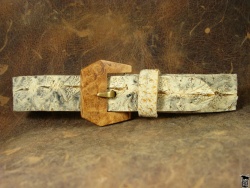
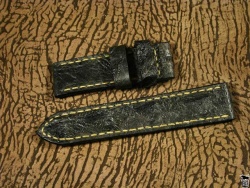

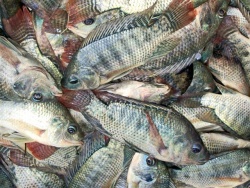
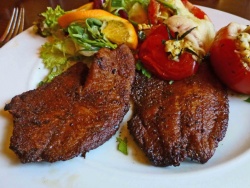
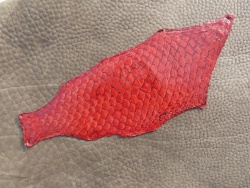

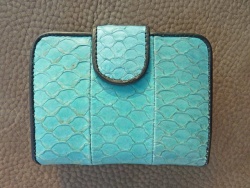
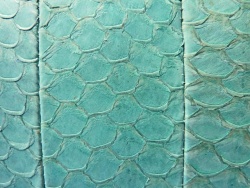

 a kotori web solution
a kotori web solution